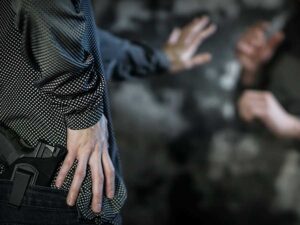Table of Contents
- Understanding Concealed Carry Laws
- Selecting the Right Firearm for Concealment
- Best Holstering Options for Everyday Wear
- Dressing for Successful Concealment
- Practicing Concealed Carry Safely
- Psychological Preparedness for Concealed Carry
- Continuous Training and Legal Updates
Concealed carry is an empowering practice that allows individuals to protect themselves and others in unpredictable situations. Having the right tools and knowledge is crucial in the personal defense world. This extends beyond merely owning a firearm; it involves selecting appropriate accessories and attire that complement a lifestyle geared toward security and responsibility. Whether navigating through daily routines or embarking on a journey, choosing appropriate concealment clothing for travel enhances convenience and safety, allowing for readiness without drawing unwanted attention.
Understanding concealed carry involves mastering skill, mindfulness, and adherence to legal frameworks. To ensure compliance and accountability, being well-informed about concealed carry laws in various regions is essential. Moreover, selecting the appropriate firearm and supportive gear is crucial. This guide delves into each element of concealed carry, focusing on practical strategies to safely and confidently integrate it into your lifestyle.
Understanding Concealed Carry Laws
Laws regarding concealed carry can vary significantly from one jurisdiction to another, both nationally and internationally. These laws can dictate where and how you can carry your firearm, what types of weapons are permissible, and what kinds of permits or licenses are required. Ignorance of these laws can lead to severe consequences, including hefty fines and legal action. By staying informed, such as reviewing Concealed Carry Law Updates, individuals can maintain compliance and enhance their safety and the safety of those around them. Keeping abreast of legislative changes is not only a legal obligation but a moral one for responsible carriers.
Selecting the Right Firearm for Concealment
When choosing a firearm for concealed carry, it’s essential to find a model that fits comfortably and meets individual needs. Size, weight, caliber, and carry environment should be considered. Compact and subcompact handguns are popular due to their ease of concealment and relatively low weight, making them ideal for all-day carrying. It’s beneficial to visit a range to handle and test different firearms to understand what feels right; sensory alignment with a gun can significantly enhance one’s comfort and performance under pressure. Personal comfort can impact the physical experience of carrying and the psychological readiness to use the weapon if needed.
Best Holstering Options for Everyday Wear
A quality holster is indispensable for safe concealed carry. It keeps your weapon secure, ensures easy access, and protects the trigger from accidental discharges. Holsters such as inside-the-waistband (IWB) and outside-the-waistband (OWB) are among the most common, each offering unique advantages. IWB holsters are lauded for their concealability, making them suitable for most clothing types, while OWB holsters might provide enhanced comfort and ease of access, albeit with a minor trade-off in concealment. For those preferring an alternative, shoulder or ankle holsters can provide viable options depending on personal preferences and dress choices. Ultimately, the right holster will complement both your firearm and your lifestyle.
Dressing for Successful Concealment
Choosing the proper attire can significantly enhance your concealed carry experience. Successful concealment requires clothing that accommodates both the firearm and holster without sacrificing discretion or comfort. Loose-fitting or structured garments can prevent printing—the handgun’s visible outline—thus maintaining a low profile. Fabrics with some elasticity can allow for better adjustability, while darker colors and patterns can help obscure any telltale bulges. Real-life examples from concealed carry experts highlight how form and function can seamlessly blend, ensuring that you remain stylish without compromising safety. Investing in purpose-built clothing can enhance this balance, providing additional pockets and features tailored for responsible carrying.
Practicing Concealed Carry Safely
Regular practice is a cornerstone of responsible firearm ownership. It’s essential to hone your skills through consistent training, which includes marksmanship, quick draw techniques, and reloading drills. Effective practice develops muscle memory and enhances your reaction time during high-stress situations. Incorporating situational awareness exercises will also prepare you to assess and navigate potential threats safely. Establishing a training routine improves your physical abilities and bolsters your confidence, making you more adept at handling your firearm reliably should the need arise. Safety should always be your top priority to protect yourself and those around you.
Psychological Preparedness for Concealed Carry
Carrying a concealed weapon entails significant psychological responsibility. The decision to draw a firearm comes with profound moral and legal implications. Understanding these responsibilities and preparing mentally for high-pressure scenarios ensures better decision-making processes. Maintaining Psychological Health highlights that maintaining mental well-being is crucial, enabling individuals to remain composed and make sound decisions in critical moments. Engaging in mindfulness practices or scenarios-based training can help develop the mental resilience needed for concealed carry, ensuring you’re mentally and emotionally prepared.
Continuous Training and Legal Updates
The world of firearm legislation and personal defense is dynamic, with laws and recommended practices evolving. Continuous education in firearms safety and law is essential for responsible firearm carriers. Engaging in ongoing training through workshops or classes offered by certified instructors can mitigate the risks associated with inaccurate or outdated knowledge. Participating in discussion forums or concealed carry seminars can provide valuable insights and foster community-based learning. This dedication to lifelong education ensures that carriers stay informed and capable of effectively adapting to changes within the legal and tactical landscapes.
